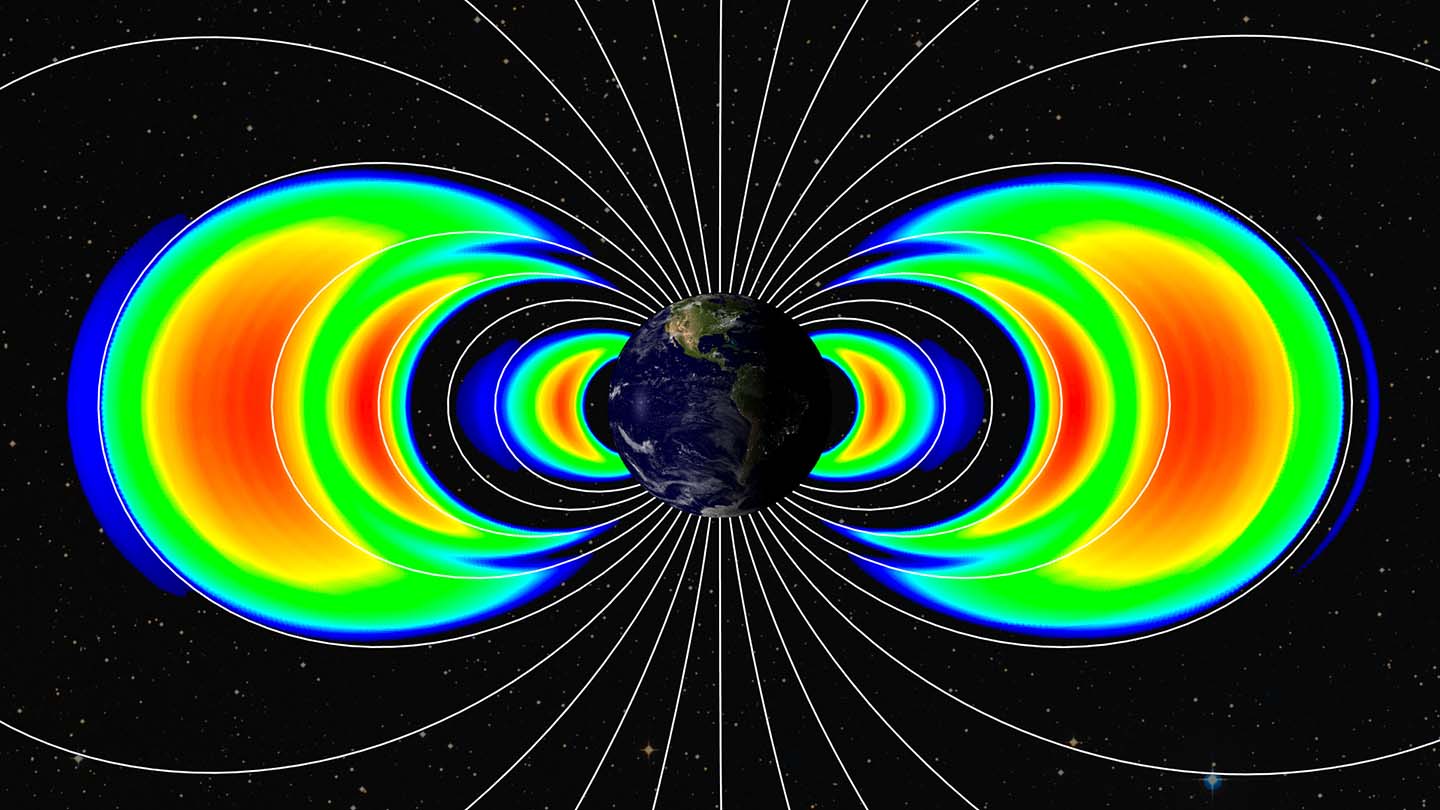Press Release
Van Allen Probes Reveal a New Radiation Belt Around Earth
NASA’s Van Allen Probes mission has discovered a previously unknown third radiation belt around Earth, revealing the existence of unexpected structures and processes within these hazardous regions of space.
Previous observations of Earth’s Van Allen belts have long documented two distinct regions of trapped radiation surrounding our planet. Particle detection instruments aboard the twin Van Allen Probes, built and managed for NASA by The Johns Hopkins University Applied Physics Laboratory (APL) in Laurel, Md., quickly revealed to scientists the existence of this new, transient, third radiation belt.
The belts — named for their discoverer, former APL staff member and pioneering physicist James Van Allen — are critical regions for modern society, which is dependent on many space-based technologies. The Van Allen belts are affected by solar storms and space weather and can swell dramatically. When this occurs, they can pose dangers to communications and GPS satellites, as well as humans in space.
“The fantastic new capabilities and advances in technology in the Van Allen Probes have allowed scientists to see, in unprecedented detail, how the radiation belts are populated with charged particles, and will provide insight on what causes them to change, and how these processes affect the upper reaches of Earth’s atmosphere,” said John Grunsfeld, NASA’s associate administrator for science in Washington.
This discovery shows the dynamic and variable nature of the radiation belts and improves our understanding of how they respond to solar activity. The findings, published today in the journal Science, are the result of data gathered by the first dual-spacecraft mission to fly through our planet’s radiation belts.
The new high-resolution observations, made by the Relativistic Electron Proton Telescope (REPT) instrument that is part of the Energetic Particle, Composition, and Thermal Plasma Suite (ECT) aboard the Van Allen Probes, revealed there can be three distinct, long-lasting belt structures with the emergence of a second empty slot region, or space, in between.
“This is the first time we have had such high-resolution instruments look at time, space and energy together in the outer belt,” said Daniel Baker, lead author of the study and REPT instrument lead at the Laboratory for Atmospheric and Space Physics (LASP) at the University of Colorado in Boulder. “Previous observations of the outer radiation belt only resolved it as a single blurry element. When we turned REPT on just two days after launch, a powerful electron acceleration event was already in progress, and we clearly saw the new belt and new slot between it and the outer belt.”
Scientists observed the third belt for four weeks before a powerful interplanetary shock wave from the sun annihilated it. Observations were made by scientists from institutions including LASP; NASA’s Goddard Space Flight Center in Greenbelt, Md.; Los Alamos National Laboratory in Los Alamos, N.M.; and the Institute for the Study of Earth, Oceans, and Space at the University of New Hampshire in Durham.
“This finding was completely unexpected,” said Barry Mauk, Van Allen Probes project scientist at APL. “No one predicted the existence of structure in the outer belt. Observations are now leading the theory.”
Each Van Allen Probe carries an identical set of five instrument suites packages that allow scientists to gather data on the belts in unprecedented detail. The data are important for the study of the effect of space weather on Earth, as well as fundamental physical processes observed around other objects, such as planets in our solar system and distant nebulae.
“We are able to study these processes just a few thousand kilometers above our own planet’s surface,” Mauk said. “It is like having a particle accelerator in our own backyard.”
“Even 55 years after their discovery, the Earth’s radiation belts still are capable of surprising us and still have mysteries to discover and explain,” said APL’s Nicky Fox, Van Allen Probes deputy project scientist. “We thought we knew the radiation belts, but we don’t. The advances in technology and detection made by NASA in this mission already have had an almost immediate impact on basic science.”
The Van Allen Probes are the second mission in NASA’s Living With a Star Program to explore aspects of the connected sun-Earth system that directly affect life and society. APL built the spacecraft and manages the mission for NASA from its campus in Laurel, Md. Goddard manages the program.
For more information on the Van Allen Probes, visit http://www.nasa.gov/vanallenprobes and http://vanallenprobes.jhuapl.edu.
